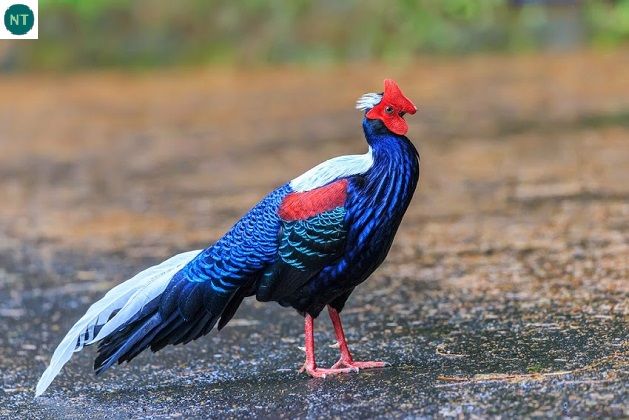The Swinhoe’s Pheasant (Lophura swinhoii), found only in the forests of Taiwan, is a living emblem of the island’s wild beauty. Males are unmistakable — cloaked in deep blue-black feathers that shimmer with an oily sheen, crowned with a snow-white crest, and adorned with bold red facial wattles that glow against the dark. A pure white stripe runs along the back, leading to a long, elegant tail tipped in white, making each movement through the undergrowth a quiet display of contrast and grace.
Inhabiting Taiwan’s mid-elevation mountain forests, this pheasant prefers the cool shade of broadleaf and mixed woodlands, where it forages for seeds, fruits, shoots, and the occasional insect. Males are often solitary or accompanied by a few females, moving deliberately along mossy forest floors, their striking plumage flashing in patches of filtered sunlight.
Courtship is a carefully choreographed performance: the male raises his crest, fans his tail, and circles the female with slow, deliberate steps, his red wattles swelling in vivid display. In the soft mountain fog, the spectacle feels almost mythic — a forest spirit courting under the watch of ancient trees.
Endemic and protected, the Swinhoe’s Pheasant is more than just a bird — it is a national treasure, a rare blend of elegance, resilience, and mystery that survives in the last strongholds of Taiwan’s wild heart.
Regal. Enduring. A ghost of blue and white in the mist.
